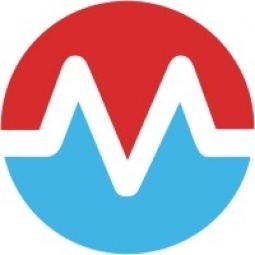Customer Company Size
Large Corporate
Country
- United Kingdom
- United States
Product
- Morpheus multi-cloud management platform
- ServiceNow
- SaltStack
Tech Stack
- VMware
- Oracle
- AWS
- Azure
- Google Cloud Platform
- Apache
- Tomcat
- JBoss
- Microsoft SQL
- Windows
- CentOS
- RHEL
- OEL
- Microsoft Active Directory
- InfoBlox
- Cisco ACI
Implementation Scale
- Enterprise-wide Deployment
Impact Metrics
- Cost Savings
- Productivity Improvements
Technology Category
- Infrastructure as a Service (IaaS) - Hybrid Cloud
- Infrastructure as a Service (IaaS) - Cloud Computing
- Infrastructure as a Service (IaaS) - Private Cloud
- Infrastructure as a Service (IaaS) - Public Cloud
Applicable Industries
- Pharmaceuticals
Applicable Functions
- Discrete Manufacturing
- Product Research & Development
Use Cases
- Predictive Maintenance
- Edge Computing & Edge Intelligence
Services
- Cloud Planning, Design & Implementation Services
- System Integration
About The Customer
AstraZeneca is a global, science-led bio-pharmaceutical business that delivers innovative and life-changing medicines used by millions of patients worldwide. Operating in over 100 countries, with hundreds of projects in its pipeline at any given time, the company focuses on the discovery, development and commercialization of prescription medicines primarily for Oncology, Cardiovascular, Renal and Metabolism and Respiratory Therapy. AstraZeneca operates one of the most robust hybrid IT environments in the bio-pharmaceutical industry. Arguably one of the busiest and brightest in the business, the company’s enterprise IT organization oversees more than 16,000 virtual and physical servers and 2,700 applications across 15 global locations spanning on-prem VMware infrastructure and multiple public cloud providers including AWS, Microsoft Azure, and Google Cloud Platform.
The Challenge
AstraZeneca’s Global Infrastructure Services (GIS) division acts as the centralized architecture and engineering team to support the huge volumes of IaaS and PaaS requests coming from seven key business units. Like most industries today, bio-pharmaceuticals is a segment where time is the enemy. Speed is the currency of competitive differentiation and as such the GIS leadership is under constant pressure to deliver more value in less time. After analyzing processes, the team determined that developer requests for resources took an average of 80 man-hours to fully deliver in a production ready state because of manual handoffs and approvals across systems and teams. The company was simply growing too quickly to continue with this type of bottleneck. The GIS team knew that unless they introduced additional automation and orchestration to streamline their processes, it could hinder future delivery times to their internal clients.
The Solution
After realizing the legacy approach to VMware automation wasn’t cutting it, AstraZeneca decided to look for a more innovative and agnostic approach. The search led them to both traditional players and emerging technology vendors including Morpheus Data. During the Proof of Concept (PoC) phase, the results were immediate! Less than 24 hours after starting their implementation, the GIS team was able to enable push-button provisioning of new instances to their VMware ESX cluster using the Morpheus multi-cloud management platform. Once selecting Morpheus as their enabling technology for cloud automation, the global roll-out went very quickly across 8 data centers with thousands of applications under management. The increase in deployment speed not only enables AstraZeneca to compete more effectively in market, the GIS team has significantly reduced operational costs. Initially, Morpheus automatically orchestrated every IaaS and PaaS provisioning request through ServiceNow as the end-user facing interface. This included orchestrating across AstraZeneca’s compliance, networking, access, quality and control, operations and capacity management tools and platforms. With the agility gains seen through advanced hybrid-cloud automation, AstraZeneca has modernized their approach and is using the native Morpheus interface and APIs to move even faster while still assuring ServiceNow CMDB and other updates are happening in the background.
Operational Impact
Quantitative Benefit

Case Study missing?
Start adding your own!
Register with your work email and create a new case study profile for your business.
Related Case Studies.

Case Study
Case Study: Pfizer
Pfizer’s high-performance computing software and systems for worldwide research and development support large-scale data analysis, research projects, clinical analytics, and modeling. Pfizer’s computing services are used across the spectrum of research and development efforts, from the deep biological understanding of disease to the design of safe, efficacious therapeutic agents.

Case Study
Fusion Middleware Integration on Cloud for Pharma Major
Customer wanted a real-time, seamless, cloud based integration between the existing on premise and cloud based application using SOA technology on Oracle Fusion Middleware Platform, a Contingent Worker Solution to collect, track, manage and report information for on-boarding, maintenance and off-boarding of contingent workers using a streamlined and Integrated business process, and streamlining of integration to the back-end systems and multiple SaaS applications.

Case Study
Process Control System Support
In many automated production facilities, changes are made to SIMATIC PCS 7 projects on a daily basis, with individual processes often optimised by multiple workers due to shift changes. Documentation is key here, as this keeps workers informed about why a change was made. Furthermore, SIMATIC PCS 7 installations are generally used in locations where documentation is required for audits and certification. The ability to track changes between two software projects is not only an invaluable aid during shift changes, but also when searching for errors or optimising a PCS 7 installation. Every change made to the system is labour-intensive and time-consuming. Moreover, there is also the risk that errors may occur. If a change is saved in the project, then the old version is lost unless a backup copy was created in advance. If no backup was created, it will no longer be possible to return to the previous state if and when programming errors occur. Each backup denotes a version used by the SIMATIC PCS 7 system to operate an installation. To correctly interpret a version, information is required on WHO changed WHAT, WHERE, WHEN and WHY: - Who created the version/who is responsible for the version? - Who released the version? - What was changed in the version i.e. in which block or module of the SIMATIC PCS 7 installation were the changes made? - When was the version created? Is this the latest version or is there a more recent version? - Why were the changes made to the version? If they are part of a regular maintenance cycle, then is the aim to fix an error or to improve production processes? - Is this particular version also the version currently being used in production? The fact that SIMATIC PCS 7 projects use extremely large quantities of data complicates the situation even further, and it can take a long time to load and save information as a result. Without a sustainable strategy for operating a SIMATIC PCS 7 installation, searching for the right software version can become extremely time-consuming and the installation may run inefficiently as a result.

Case Study
ELI LILLY ADOPTS MICROMEDIA’S ALERT NOTIFICATION SYSTEM
Pharmaceutical production is subject to a strict set of enforced rules that must be adhered to and compliance to these standards is critically necessary. Due to the efforts of WIN 911’s strategic partner Micromedia, Lilly was able to adopt an alarm notification infrastructure that integrated smoothly with their existing workflows and emergency hardware and protocols. These raw energy sources enable the industrial process to function: electricity, WIN-911 Software | 4020 South Industrial Drive, Suite 120 | Austin, TX 78744 USA industrial steam, iced water, air mixtures of varying quality. Refrigeration towers, boilers and wastewater are monitored by ALERT. Eli Lilly identified 15000 potential variables, but limitations compelled them to chisel the variable list down to 300. This allowed all major alarms to be covered including pressure, discharge, quantity of waste water discharged,temperature, carbon dioxide content, oxygen & sulphur content, and the water’s pH.









